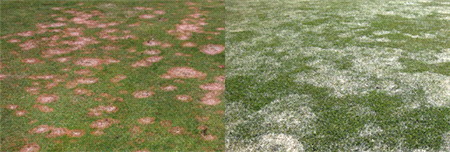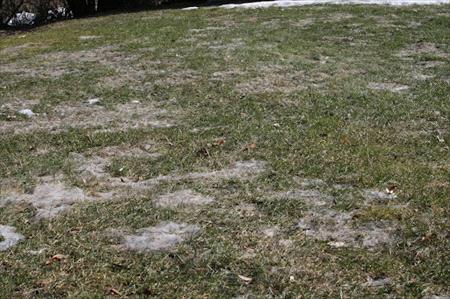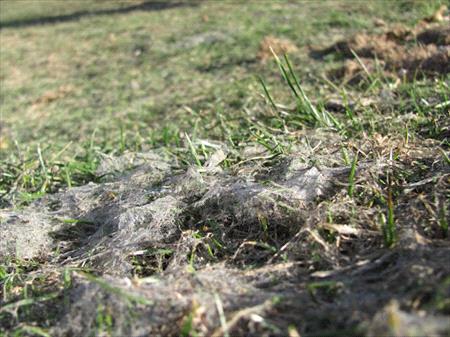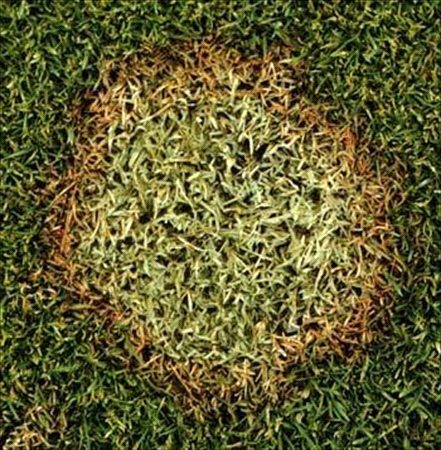Your Cart

Learn Your Lawn: Snow Mold
Request a Quote
What Is Snow Mold?
Snow Mold is a disease that commonly occurs in residential lawns in regions with cold winters and snow cover. It is caused by the growth of fungal spores that become active under the snow during the winter months. When snow accumulates on the lawn for an extended period of time, it provides a moist, humid environment that is ideal for the growth of fungal spores. Areas of the lawn that are shaded or have poor drainage are more prone to snow mold.
There are two types of Snow Mold: Gray Snow Mold and Pink Snow Mold. Gray Snow Mold is the more common of the two and appears as circular patches of grayish-white or light brown grass in the lawn. Pink Snow Mold is less common but more severe, and appears as circular patches of pinkish, slimy grass.
How Can I Control Snow Mold In My Lawn?
In the fall, it’s important to prepare for winter snowfall by raking up any leaves or debris that may have accumulated on the lawn, as these can provide a breeding ground for fungal spores. If Snow Mold does occur in your lawn, treat the affected areas by raking the grass lightly to allow air and sunlight to reach the soil and by applying a fungicide to the affected areas. In severe cases, it may be necessary to overseed the affected areas to promote new grass growth.
A thick, healthy, well-maintained lawn is the best line of defense. Here’s how you can adjust your beneficial cultural practices to reduce the spread of Snow Mold:
Avoid Watering: Under normal circumstances, you should be watering each area of your lawn for 30-45 minutes, twice per week, in the early morning so the turf is dry by nightfall. However, you should avoid watering when the disease is active.
Avoid Mowing: You should avoid mowing when the disease is active. If you do have to mow, make sure your mower blade is razor sharp, so that the blade does not fray the tips of the grass, spreading the disease. Maintain a regular mowing schedule throughout the growing season. In general, you should keep your lawn between 2 ½ and 3 ½ inches high, but during the hottest weeks of summer, you may allow the grass to grow as high as 4 inches. Never remove more than ⅓ of the grass blade at each mowing.
Fertilize Regularly: Regular applications of Weed Man’s specially formulated, slow-release granular fertilizer will help provide your lawn with adequate nutrients. These applications are timed specifically to avoid over fertilizing the lawn.
Core Aeration: Aerating your lawn can improve soil drainage and help reduce the likelihood of lawn diseases. This will also alleviate soil compaction and allow water and nutrients to penetrate deeper into the soil.
Your local Weed Man professional may be able to offer other solutions and recommend the best form of treatment that is available to improve the conditions of your lawn.
 English (USA)
English (USA) Français (CANADA)
Français (CANADA)



